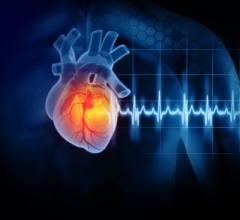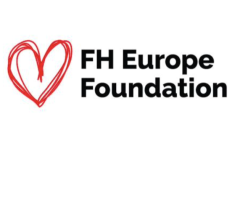May 22, 2017 — Serelaxin failed to meet the primary endpoints of the phase 3 RELAX-AHF-2 trial, according to late-breaking results presented at Heart Failure 2017 and the 4th World Congress on Acute Heart Failure, April 29-May 2 in Paris, France.
“This was a huge disappointment as we had such encouraging data from previous studies,” said co-principal investigator (PI) Prof. John R. Teerlink, M.D., professor of medicine, University of California, San Francisco (UCSF).
Acute heart failure (AHF) is the leading cause of hospitalization in patients 65 years of age and older. Within six months of discharge, up to 15 percent of patients die and 30–50 percent are readmitted. Therapy for AHF has essentially been unchanged since the 1970s.
Serelaxin is recombinant human relaxin-2, a hormone with vasodilatory and end-organ protective effects. It is naturally present in all humans, with higher concentrations in pregnant women to prepare for the extra cardiovascular and renal stresses of pregnancy.
In the phase 3 RELAX-AHF trial, serelaxin met its primary endpoint of improving dyspnoea through day five in patients admitted for AHF (p=0.007), a result driven almost exclusively by an improvement in worsening heart failure. Compared to placebo, serelaxin also reduced worsening heart failure by 47 percent through day five and both all-cause and cardiovascular mortality by 37 percent through day 180.
RELAX-AHF-2 was a multicenter trial enrolling approximately 6,600 patients hospitalized for AHF. Patients were randomized within 16 hours from presentation to 48-hour intravenous infusions of serelaxin (30 µg/kg/day) or placebo, both in addition to standard of care. The independently powered primary endpoints were 180-day cardiovascular death and worsening heart failure through day five.
RELAX-AHF-2 did not meet either of its primary endpoints. There was no difference in cardiovascular mortality at 180 days, and the trend for a reduction of worsening heart failure through day five with serelaxin was not statistically significant.
There was no beneficial effect on the secondary endpoints of all-cause mortality at 180 days, length of initial hospital stay, or the combined endpoint of cardiovascular death or rehospitalizations due to heart/renal failure through day 180. There were no significant safety concerns with serelaxin.
“In RELAX-AHF-2 we continued to show that serelaxin was safe but unfortunately we did not find that it was also efficacious,” said co-PI Prof. Marco Metra, professor of cardiology, University of Brescia, Italy. “It is concerning that the findings of this trial should be so disparate from the prior RELAX-AHF trial.”
Teerlink said, “These are truly late-breaking results and we are still analyzing the data to understand these disparate findings. Were we mislead by the results from the moderate number of events in RELAX-AHF, or is there still a group of patients in RELAX-AHF-2 who benefitted from serelaxin? Unfortunately for now we’re left with our currently inadequate therapy for AHF.”
In the same session, late-breaking results were presented from the TRUE-AHF trial of the vasodilator ularitide.3 The findings highlight the importance of adhering to eligibility criteria when enrolling patients into a trial.
TRUE-AHF randomized 2,157 patients with AHF to continuous intravenous infusion of ularitide (15 ng/kg/min) or placebo for 48 hours. There was no difference in the risk of cardiovascular death up to 34 months between the two groups despite the drug exerting the expected physiological effects.
Patients were identified before the trial blind was broken as having been eligible or ineligible for the trial based on whether or not they met the prespecified entry criteria. This revealed that 17 percent of patients in the trial had been ineligible, largely because of prohibited intravenous medications.
The TRUE-AHF presentation showed that ularitide significantly improved dyspnoea (shortness of breath) in the 83 percent of patients who had been eligible for the trial. In contrast, in the 17 percent of patients blindly identified as having been ineligible, ularitide had a significantly adverse effect on dyspnoea.
Milton Packer, trial PI and Distinguished Scholar in Cardiovascular Science at Baylor University Medical Center, said, “What is absolutely amazing is that the drug was statistically significantly better in eligible patients and statistically significantly worse than placebo in ineligible patients. So not only did the two groups respond differently, they responded in opposite directions. The eligibility criteria not only identified the patients who would respond but also identified the patients who would not be harmed.”
He continued, “When you put the eligible and ineligible patients together you get a neutral result. Ineligible patients were being treated with confounding medications, which made the interpretation of the data very difficult and took away from the safety of the drug. If the trial’s eligibility criteria had been followed it is likely that we would have found a benefit of ularitide on shortness of breath.”
Packer concluded, “This shows how it is possible for a drug to actually work but a trial not to find it. The rules outlined in a trial design matter and need to be followed, otherwise we might miss a true effect. It’s like ignoring an architect’s plans and then wondering why the house doesn’t work and doesn’t look good.”
For more information: www.escardio.org


 November 12, 2025
November 12, 2025 









